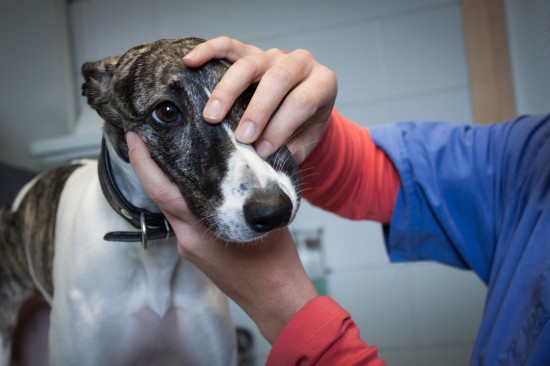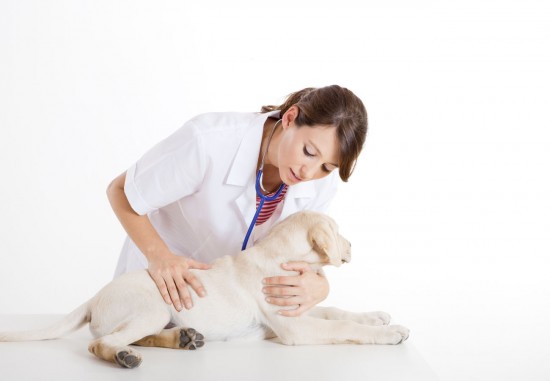

Dogs, much like people, are apt to develop the odd mole, lump or bump on their bodies as they go through life and get older, but one location that we generally don’t associate with developing lumps and growths is the inside of the dog’s mouth! Nevertheless, there are a relatively wide range of different conditions, both minor and serious, that can lead to growths within the mouth of the dog, and we will look at some of the most common of these in more detail in this article. Read on to learn more!
First of all, let’s start off with a couple of lumps and bumps you might see in the mouth that are non-cancerous, or benign.
Epulis, or boils on the gum are the most commonly found benign lump that forms in the mouth, and these are usually the same colour as the gum itself, and smooth in appearance. They tend to form between the teeth, generally between the canines or incisors, and may be either low and rounded, or appear to be standing or hanging on a stalk.
Gum boils tend to be associated with older dogs (over the age of six) and are particularly common among brachycephalic dog breeds, such as the pug, boxer and bulldog.
As the growth gets larger over time, they may cause issues with eating comfortably, and exacerbate drooling. They can also cause bad breath, bleeding from the growth itself, and if they push on the teeth, cause the teeth to grow out of alignment.
If your dog develops a gum boil, pop them along to the vet for examination and diagnosis. If the growth is problematic, your vet will usually recommend that it be surgically removed.
Viral papillomas are contagious between dogs, and can be passed from dog to dog by means of direct contact. They tend to develop in dogs under the age of two, before their immune systems have fully developed their ability to fight off viral conditions and infections. Viral papillomas tend to be cauliflower-like in appearance, although they can also appear smooth. Viral papillomas tend to resolve themselves and disappear on their own in six months or less, but they should be closely monitored as there is a slim possibility that they may turn malignant.
There are three different types of oral cancers that can present in dogs within the mouth, being melanomas, squamous cell carcinomas, and fibrosarcomas respectively.
The malignant melanoma is the most common form of malignant growth in the mouth of the dog, which develops due to an abnormal growth and division of the melanocyte cells. Malignant melanomas tend to appear on the lip, gum and soft palate, and also sometimes on the tongue itself.
Melanomas tend to be associated with older dogs, generally developing after a dog has reached maturity. Some breeds seem to be particularly prone to developing malignant melanomas too, particularly those with pigmented mouths, such as the Chow Chow. Malignant melanomas in the mouth can cause problems with eating normally, bad breath, swelling of the face in the area of the growth, and bleeding from the mouth.
Malignant melanomas of the mouth tend to grow quickly and aggressively, and may spread to other areas of the body, including the lymph nodes and the lungs.
Squamous cell carcinomas are something that is most commonly associated with cats, but they do occasionally develop in dogs as well. These types of growths tend to develop within the gingiva of the gums and tend to be very aggressive within its localised area. As the cancer develops, it can also spread to other parts of the body in the later stages of the disease.
Squamous cell carcinomas can cause bad breath and problems eating, as well as leading to excessive drooling. Depending on where in the mouth the growth appears, it may be operable, and often, a full recovery will follow.
Fibrosarcomas are malignant growths that tend to become aggressive and invasive mainly within their localised area, but can also spread to other areas of the body once they become advanced. Their initial appearance is like that of a red boil or ulcer on the fibrous tissues of the mouth, and they may ulcerate and bleed much like an ulcer would as well. They are relatively slow spreading, and may be treatable.
There are also various other types of malignancies that can develop in the mouth of the dog less commonly, including mast cell tumours, lymphomas and osteosarcomas, but the three malignant growths mentioned above are by far the most common types of oral cancers in the dog.
Because there is a relatively wide range of both malignant and benign growths that can develop in the mouth over time, it is important to get your dog checked out by your vet as soon as possible if you spot something amiss in your dog’s mouth.
 Hot Spots On Dogs
Hot Spots On Dogs
Hot Spots On Dogs
Hot Spots On Dogs
 5 Common Health Issues In Cats You Can Help Prevent
5 Common Health I
5 Common Health Issues In Cats You Can Help Prevent
5 Common Health I
 Where To Take Your Puppy Or Young Dog To Socialise Them
Where To Take You
Where To Take Your Puppy Or Young Dog To Socialise Them
Where To Take You
 10 Tips To Help Make Your Christmas Tree Cat Proof
10 Tips To Help M
10 Tips To Help Make Your Christmas Tree Cat Proof
10 Tips To Help M
 Tips To Buy Rabbit Hutches Online In UK
Tips To Buy Rabbit Hutches Online In UK
With p
Tips To Buy Rabbit Hutches Online In UK
Tips To Buy Rabbit Hutches Online In UK
With p
Copyright © 2005-2016 Pet Information All Rights Reserved
Contact us: www162date@outlook.com